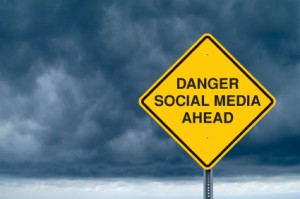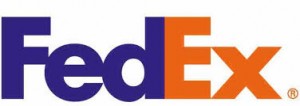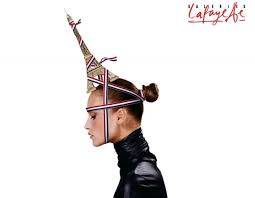Local, Personal, Social, and Always On
 The Boston Consulting Group (BCG) just published a new study that compares 16 industries in their ability to deliver digital satisfaction to American consumers. What’s the worst industry? The telco/cable industry is at the bottom of the heap. What’s the best industry? Surprise … it’s personal banking.
The Boston Consulting Group (BCG) just published a new study that compares 16 industries in their ability to deliver digital satisfaction to American consumers. What’s the worst industry? The telco/cable industry is at the bottom of the heap. What’s the best industry? Surprise … it’s personal banking.
BCG surveyed 3,135 consumers in March 2013 and measured satisfaction with 17 different digital “interactions”. These were grouped into four broad categories:
- Research – interactions include the ability to find information quickly and easily, the ability to find better prices, etc.
- Transactions – the ease of making the transaction, the ability to buy what I need, etc.
- Post-transaction activities – including social features, customized communication, and mobile access.
- Other – including quick access to help and the degree to which I trust this transaction.
The researchers asked consumers to rate each interaction in two ways: 1) how important is it?; 2) how satisfied are you with it? With these data, we can compare expectations and how well those expectations are met.
The researchers crunched all the data and compiled the 16 industries into four categories:
Leaders – consumers had high expectations of leaders and, by and large, their expectations were met. In general, the leaders scored well across all four interaction categories, from beginning to end. (Actually, the process never really ends). The four leading industries are (in order) personal banking, online merchants, media retail, and electronics retail. Personal banking leads by a wide margin, with a total satisfaction score of 15.2, compared to 11.8 for online merchants, the second ranking industry.
Aspirants – these industries do well on the research interactions but lag on the transaction and post-transaction categories. In other words, they get off to a good start but don’t follow through well. Consumers are not displeased with aspirant performance but think it could be improved. Industries in this category are: apparel retail, airlines, investments, and hotels.
Sleepers – consumers have low (digital) expectations of sleeper industries … and those expectations were fulfilled. Sleeper industries are: supermarkets, automobiles, and real estate.
Laggards – consumers have higher expectations of laggards (than of sleepers) but low satisfaction. Laggards fall behind in all interaction categories, from research to post-transaction. Laggards include: utilities, government services, health care providers, insurance, and (worst of the worst) telco and cable
Consumers want the digital experience to offer more than the physical experience. Digital might offer more options, more information, better prices, or more convenience. It might even be fun. Generally, consumers “expect the digital experience to be local (recognizing where they are), personal (tailored to their individual needs and preferences), social (shared with their friends) – and always on.”
The study also points to the growing importance of mobile access. Roughly half of Millennials (born 1980 – 2000) use mobile devices while shopping. For older consumers, the rate is approximately one-fifth. Mobile access enables two key trends:
Showrooming – check out the merchandise in a brick-and-mortar retail outlet, then compare prices and buy online.
Omnichannel – use the entire array of online, mobile, virtual, social, and real world channels to make a buying decision.
As the authors point out, the purchasing process is no longer linear; it’s now fluid and dynamic. To succeed, companies will need to enhance satisfaction through the entire range of interactions and do it through all channels. It’s a daunting challenge. The reward, however, is a slice of the $450 billion e-commerce market that BCG projects by 2016.
Dealing With a Swarm of Bees

Born to Sting
The second-term curse seems to be biting Barack Obama especially hard. With three simultaneous “scandals”, the opposition smells blood and, yes, they’re already talking about impeachment.
So, what can the President do? How can he limit the damage? If I were his communications director, what advice would I give?
First, imagine what you would do if you were attacked by a swarm of angry bees. Would you go on the offensive? Would you attack them? That’s probably a very, very bad idea. The best you can hope for is to contain them, put on some protective clothing, and limit the number of times that you get stung. (This is a great analogy and I adapted it from Marilyn Buckner’s work).
Here are some tips:
Appoint one (and only one) spokesperson – the more spokespeople you have, the more likely it is that the public will perceive contradictions.
Tell the truth even if it makes you look bad — Better to look bad but honest rather than bad and dishonest.
Don’t blame the opposition – even if they’re being hypocritical. You’re not in a position to point fingers. For instance, President Obama might say, with a roll of the eyes, “Wait. The Tea Party claims tax-exempt status because they’re non-political? Are you kidding me?” That might be emotionally satisfying (heck, it may even be accurate) but it only inflames the bees. The goal is to do the opposite.
Don’t blame the media – it only inflames the bees.
If there’s more to the story, say so – the press is great at digging up dirt in a slow, drip, drip, drip fashion. Rather than being tortured over time, get it over with. Tell the whole story and get out in front of the process.
Explain how you’ll fix the situation – remember that you can only win an argument in the future tense. So, develop a plan, reality test it, and present it. It’s important to do this quickly but it’s even more important to reality test it. If it’s a half-baked plan, the bees just get angrier.
Don’t drag your feet – it’s important that the public perceives that you’re doing something. Have a sense of urgency. Appear active.
Don’t hide – you may not feel like coming out for a daily dose of abuse but you need to. You’re going to get abused no matter what. Better to be abused while looking stalwart rather than to be abused while looking cowardly.
Heads must roll (most likely) – it’s sad but true that good people are going to get hurt in the process. But, hey, that’s politics. The bees will demand a sacrifice. Delaying the inevitable only makes it worse.
It’s not an easy process. Your emotions will likely tell you to act in ways that will only damage your position. Michael Levine, a Hollywood PR wizard who has supported some spectacularly stupid stars, probably says it best: “Go fast. Go humble.”
Self-Aware Marketing Engines
 Suellen recently bought a pair of eyeglasses from Warby Parker, the online retailer. To get an idea of how they would look, she uploaded a picture of herself and tried the glasses on virtually. She “tried on” several models, picked the most flattering one, ordered it, and received it within a couple of days.
Suellen recently bought a pair of eyeglasses from Warby Parker, the online retailer. To get an idea of how they would look, she uploaded a picture of herself and tried the glasses on virtually. She “tried on” several models, picked the most flattering one, ordered it, and received it within a couple of days.
Suellen’s glasses are stylish but dumb. They don’t know what they are, where they came from, or how they got to Suellen. Within five years, I suspect that products from Warby Parker (and similar purveyors) will not only be stylish but also self-aware. In fact, let’s call them Self-Aware Marketing Engines or SAMEs.
A Self-Aware Marketing Engine knows what it is and how to sell. An embedded chip carries its identity. A SAME knows:
- What it is – the chip carries information on model number, date of manufacture, serial number, etc.
- Who owns it – Suellen’s Warby Parkers will know her name and contact details and perhaps other things such as her Facebook address, Klout score, birthday, maybe even her husband’s name and contact details.
- How to buy – the chip carries information on how to order similar products.
- How to talk to other devices – probably using Near Field Communications (NFC).
Essentially, SAMEs automate the word-of-mouth process. Let’s say that Suellen’s girlfriend, Laurie, sees the glasses and admires them. Laurie taps her NFC-enabled smart phone on the glasses and learns how she can buy similar glasses and what they cost. She also learns she can upload a photo of herself to see how the glasses look on her.
Laurie uploads a picture to the Warby Parker website and “tries on” various models. The website can tell that Laurie’s visit resulted from Suellen’s influence. It sends Suellen a thank-you note and perhaps a small discount on her next purchase.
Laurie finds three models that she really likes but can’t decide which one to buy. Warby Parker’s website asks how it can help. Laurie explains her dilemma. The website has a solution. With Laurie’s permission, the website loads images of her wearing each of the three different styles to Laurie’s Facebook page. It also sends a “Which style do you like best?” query to all of Laurie’s Facebook friends. It also links to Suellen’s Facebook page so she can follow (and influence) the process.
Laurie waits a day and counts the votes, but then gets distracted by a visit from her friend, Mary Kay. The Warby Parker website notes that nothing has happened for a few days and sends Laurie an e-mail with a small incentive to order soon.
With Mary Kay’s help, Laurie decides to order the Hippie @ Sixty frames (Model 6060/CBGB). Warby Parker’s factory encodes Laurie’s information in the frames – creating another Self-Aware Marketing Engine – and sends them to her. With Laurie’s permission, it also posts the “winning” selection to Laurie’s Facebook page. It also notes that Suellen has influenced the sale and sends her another thank-you note and a larger discount on her next purchase.
Laurie perceives that she has bought some stylish frames. Warby Parker perceives that they’ve sold a Self-Aware Marketing Engine that will generate more sales in the future. For Laurie, it’s a solution to her eye care needs. For Warby Parker, it’s the gift that goes on giving.
Could it happen? Devices are getting smarter all the time. Many devices today are already aware of their own location and orientation (which way they’re pointed). Why not incorporate additional self-awareness that enables products to sell more products? It will happen soon. The only question is who will get there first.
(By the way, though I took a different angle, much of the inspiration for this post came from an article in the April issue of the McKinsey Quarterly: “The Coming Era of ‘On-Demand’ Marketing“)
Which Way to the Future? International Branding.
“Time flies like an arrow”, Arthur Eddington.
“Fruit flies like a banana”, Groucho Marx.
If it’s true that time flies like an arrow, which direction is it headed? Well, it depends on your culture. We’re all aware that different cultures have different attitudes toward time. In Sweden, people show up for a 7:00 dinner date at 7:00 precisely. In Mexico, people might show up half an hour to an hour later. You shouldn’t show up “on time” because your host might not be ready and that would be embarrassing.
But which way does time flow? Where, precisely, is the future? Somewhat surprisingly, it depends on how you read. People who read from left to right — as we do in English — see the future as being to the right. Indeed, good marketing charts always show trends up and to the right. (I think I could make up most marketing charts without knowing the data).
People who read from right to left — think of Arabic and Hebrew – tend to see the future as being to the left. This has important implications for public speaking. I’ve given speeches to Arabic audiences and I’m sure that I pointed to the right as I indicated activities in the future. In other words, my body language conflicted with my verbal language and probably confused the audience.
The same holds true in graphic treatments that are used across cultures. My favorite example is the FedEx logo. (I discovered this in a Scientific American Mind article). Look closely at the English FedEx logo below. In the “negative space” between the E and the X, you’ll see an arrow in white. Which way is it pointed? Well … to the future, of course.

Now look at the Arabic FedEx logo. Again, you’ll find an arrow in the negative  space between letters. Which way is it pointed? Well … to the future, of course. It’s a good example of how different cultures see things differently. It’s also a fairly rare example of a corporation showing cross-cultural awareness and sensitivity in its advertising. FedEx should be commended.
space between letters. Which way is it pointed? Well … to the future, of course. It’s a good example of how different cultures see things differently. It’s also a fairly rare example of a corporation showing cross-cultural awareness and sensitivity in its advertising. FedEx should be commended.
(For an example of how the Aymara Indians of Bolivia see the future differently than the rest of us, click here).
